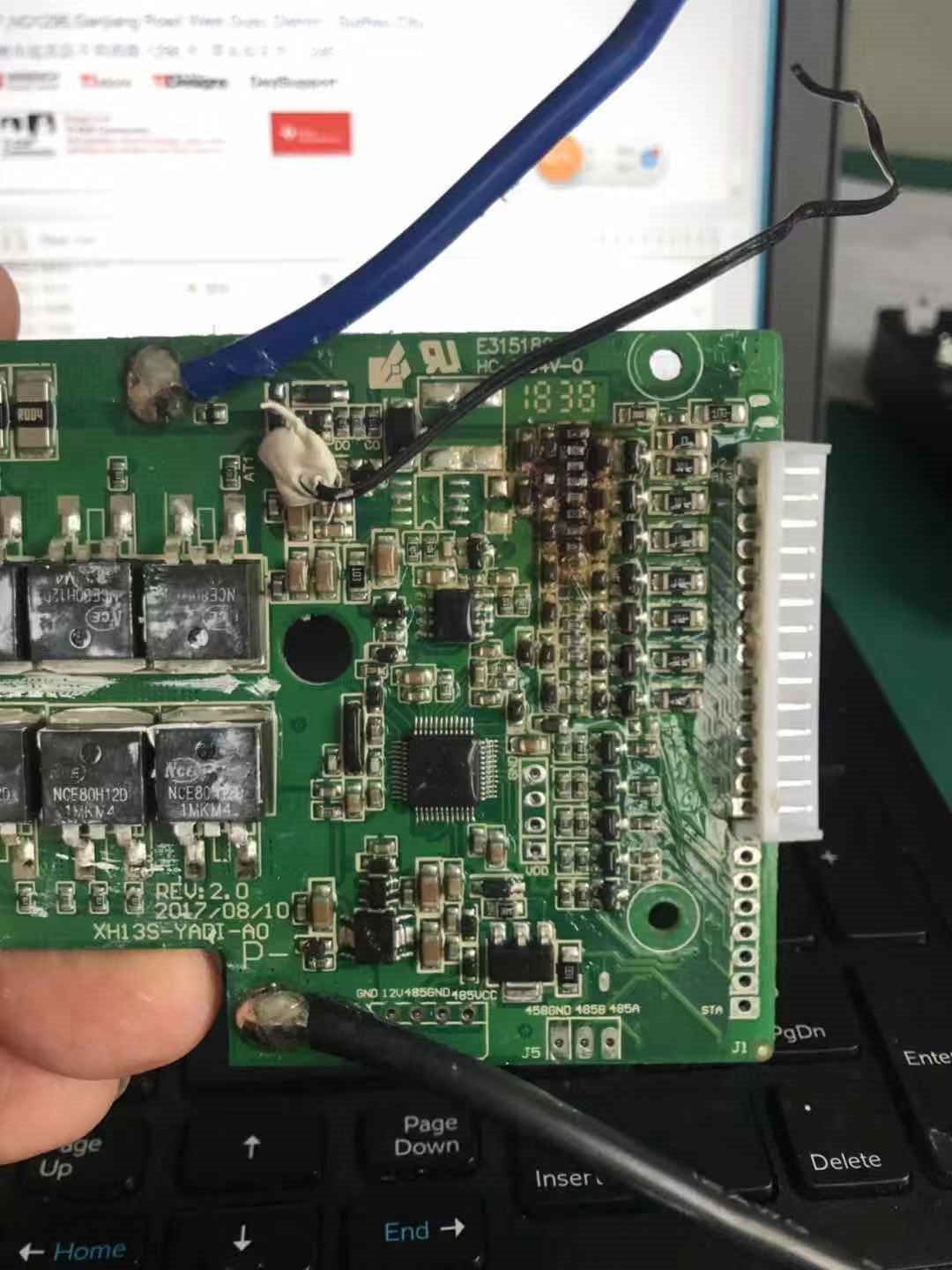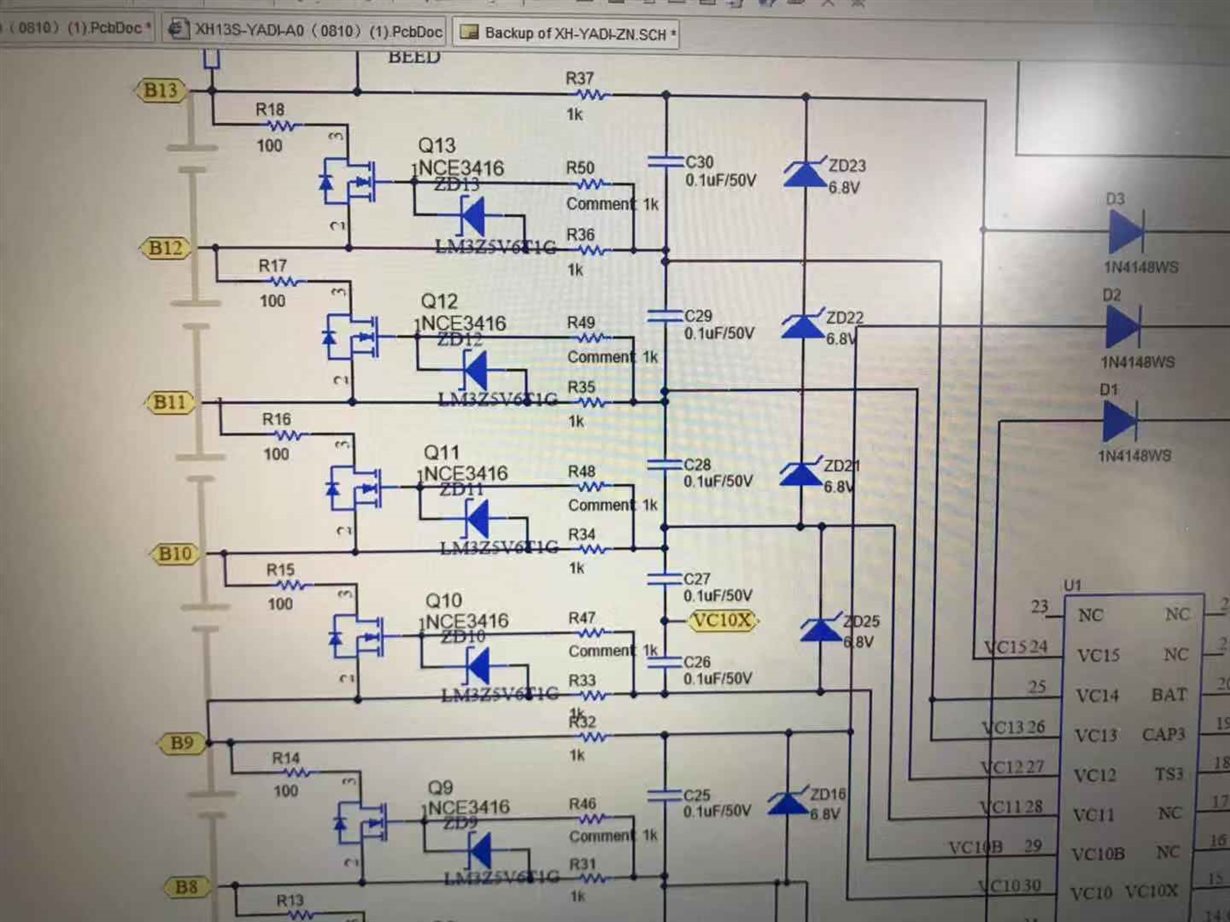Dear All:
At present, 750 sets of 13S BMS boards made by the customer have been found to have 3 boards is damage after full charging, the resistance of the high-side Cell voltage sampling circuit in series will be damaged, as shown in the figure below
Remove BQ76940from the board , measure BQ76940, and find VC5X or VC10X short circuit to the ground (one VC5X short circuit to GND, one VC10X short circuit to GND, one VC5X short circuit to the ground).
The client has not found the specific reason for this project.
1. The battery voltage in the initial state is about 3.9v, and the customer will make a charge and discharge Cycle. When the battery is charged and placed for a period of time to prepare for the discharge experiment, it is found that the Pack is too hot.
The battery voltage measured at this time is about 4.13v. According to the customer, the voltage will drop after the battery is fully charged for a period of time.
2. Remove BQ76940, measure the impedance of each pin to GND, and find the short circuit of VC5X or VC10X to the ground
Experiment 1. Direct grounding test of VC5X, hot chip, hot resistance of voltage sampling circuit without damage.
2. Dislocation arrangement and insertion, after many experiments, will lead to short circuit of VC5X to the ground
The production line workers may have dislocation during the connection and insertion in the assembly process, but they will correct it immediately. At this time, BQ76940 will not be broken, or it cannot be charged.
Question 1. Why did the problem occur after the battery was fully charged
2. Why are the burned places all high side series resistors? Please help to analyze the possible reasons, thank you.



